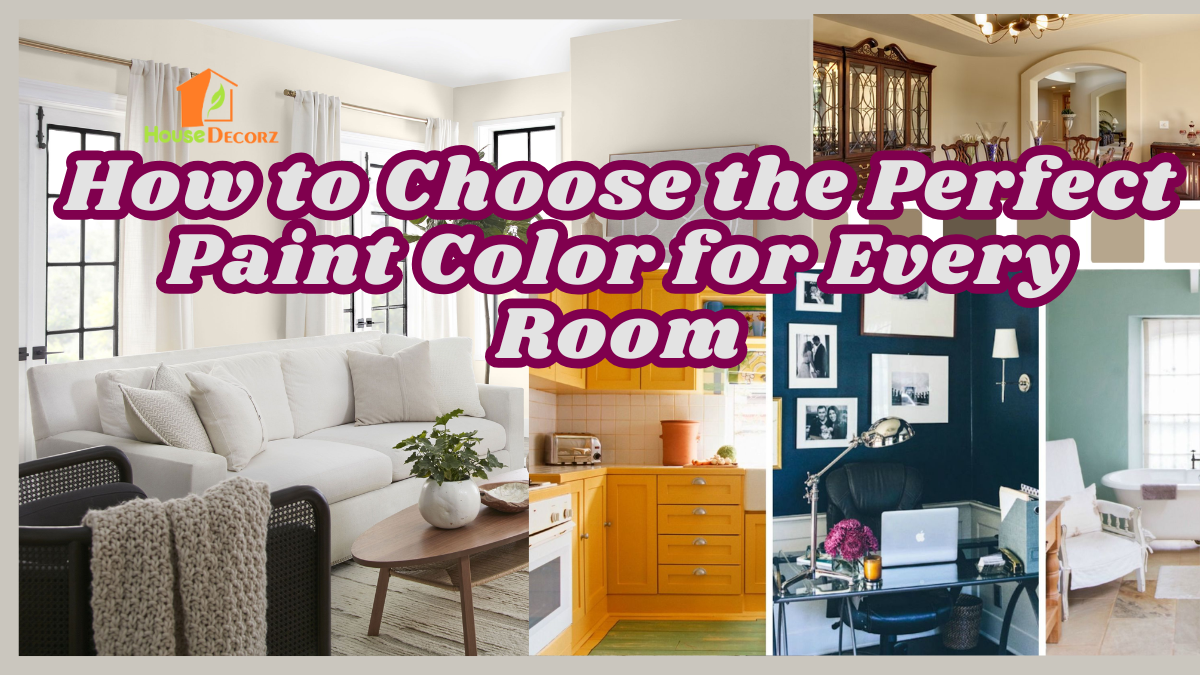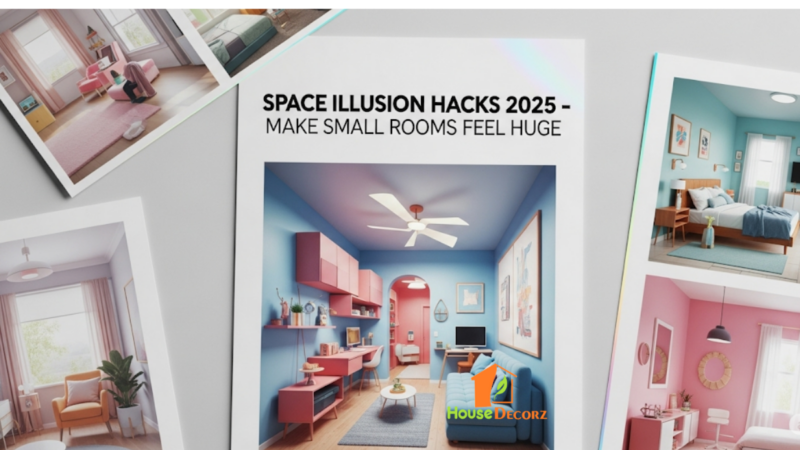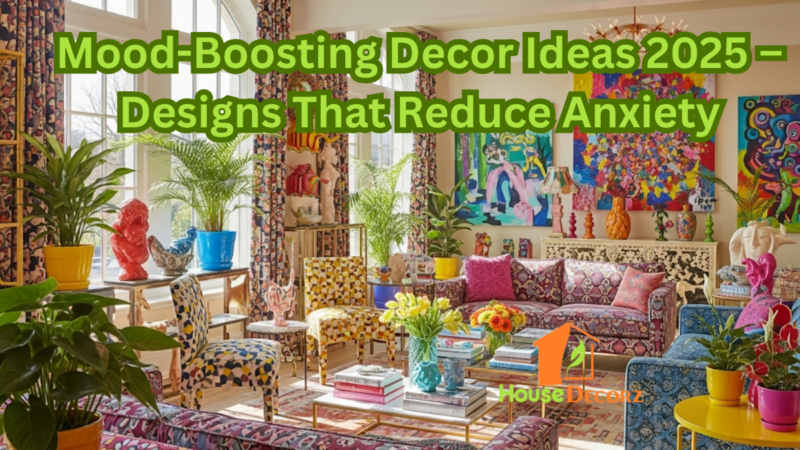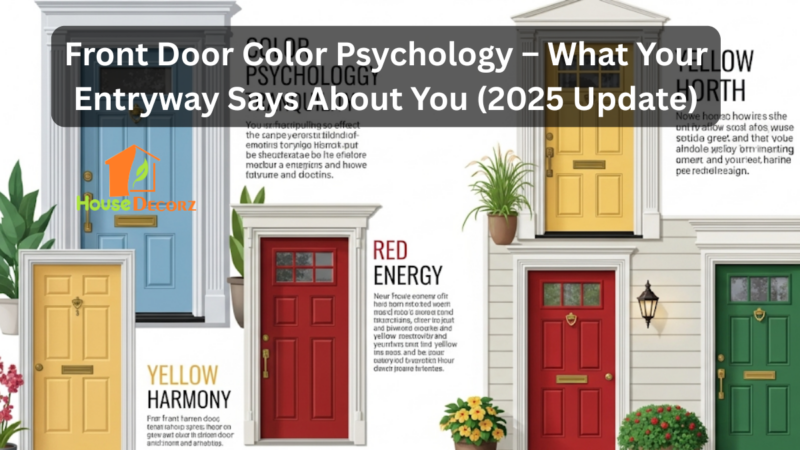How to Choose the Perfect Paint Color for Every Room

Picking the right paint color can completely transform the mood, style, and energy of your home. But with so many shades, finishes, and undertones to choose from, it’s easy to feel overwhelmed. Whether you’re updating a single wall or repainting your entire home, this home painting guide will help you confidently choose the best wall colors for every room—no guesswork, no regrets.
Let’s walk through how to select colors that match your room’s size, lighting, and purpose, while offering tips tailored to everything from cozy small spaces to spacious living areas.
Home Painting Guide: Best Wall Colors
Understand the Role of Lighting
Lighting can drastically affect how a color appears. The same shade will look different in natural daylight, incandescent light, or LED lighting. Before committing to a color, test samples on your wall at different times of the day.
- North-facing rooms: Cool, consistent light. Warm colors help balance the coolness.
- South-facing rooms: Lots of natural light. Most colors look great here.
- East-facing rooms: Bright in the morning, dimmer by afternoon. Soft warm hues work well.
- West-facing rooms: Cooler in the morning, warmer at sunset. Earth tones thrive in this light.
Interior hack: Always test at least two or three shades before making your final decision. Use large swatches or paint sample boards.
Match the Mood to the Room’s Function
Each room in your home serves a different purpose, so the paint color should reflect that function.
Living Room Ideas
This is where people gather, so you want a shade that’s welcoming. Neutral tones like warm greys, beige, or soft sage green create a versatile backdrop that works with many furniture styles.
Pro Tip: Add accent walls in deeper hues—like navy or terracotta—for a modern touch.
Bedroom
The bedroom is your retreat. Soft blues, muted greens, and warm greys are calming choices that encourage relaxation. Avoid overly bright or dark shades unless used as subtle accents.
Kitchen
For energy and brightness, consider whites, light yellows, or pale greens. These tones make the space feel clean and inviting, especially in smaller kitchens.
Bathroom
Go light and airy with colors like seafoam, soft aqua, or light grey. These help make small bathrooms feel more open.
Home Office
Colors influence focus. Choose muted greens, cool blues, or earthy tones that reduce eye strain and boost productivity.
Choose Colors That Make Small Spaces Feel Bigger
If you’re working with a compact layout, the right paint color can visually enlarge the space.
- Light shades reflect more light and open up the room.
- Monochromatic color schemes reduce visual clutter.
- Low-contrast trim and ceiling colors blend the edges, making the room feel taller.
Small spaces hack: Use vertical stripes or paint half the wall a darker color to add perceived height without overpowering the space.
Coordinate With Existing Decor
Don’t pick your paint in isolation. Consider your furniture, flooring, rugs, and artwork. Aim for a palette that complements—not competes—with what’s already in the room.
Tip: Use color wheel basics. Complementary colors (like blue and orange) create vibrant contrast, while analogous colors (like green and blue) create harmony.
Don’t Ignore the Finish
Finish affects both the look and functionality of your paint:
- Matte/Flat – Great for hiding flaws, but harder to clean.
- Eggshell – Slight sheen, easier to wipe down.
- Satin – Ideal for high-traffic areas like hallways.
- Semi-gloss/Gloss – Reflective and durable, best for trim, doors, and kitchens.
Home painting guide tip: Use glossier finishes where durability and cleanability matter.
Recommendation
2025 Home Paint Color Trends in the USA: What Designers Recommend
Top Kitchen Color Palettes for U.S. Homes in 2025 – Designer Picks
Top 5 Wall Paint Colors for U.S. Homes in 2025 – Designer Picks for Every Room
Top Minimalist Living Room Ideas 2025 – Cozy & Space-Saving Trends
30+ Inspiring Bedroom Wall Decoration Ideas to Transform Your Space
Final Thoughts
Choosing the perfect paint color doesn’t have to be stressful. With the right approach—understanding lighting, matching mood to room function, and using smart interior hacks—you can confidently select the best wall colors for every space. Whether you’re tackling a full home makeover or refreshing a single room, this guide will keep you focused, inspired, and in control.
Frequently Asked Questions (FAQs)
Q: What are the best wall colors for small rooms?
A: Lighter shades like off-white, soft greys, and pale blues help reflect light and make small spaces feel bigger.
Q: How do I test paint colors before committing?
A: Use large paint swatches or sample pots on different walls. Check them throughout the day under various lighting conditions.
Q: Which paint finish is best for the living room?
A: Eggshell or satin finishes are ideal—they’re both durable and slightly reflective, adding depth without showing too many imperfections.
Q: Can I use dark colors in a small room?
A: Yes, but use them strategically. An accent wall in a rich shade can add depth without overwhelming the space. Pair it with lighter tones elsewhere.
Q: How do I choose colors that work throughout the whole house?
A: Stick to a cohesive palette of 3–5 complementary colors. Use lighter shades in shared spaces and save bolder tones for rooms where you want a distinct vibe.






